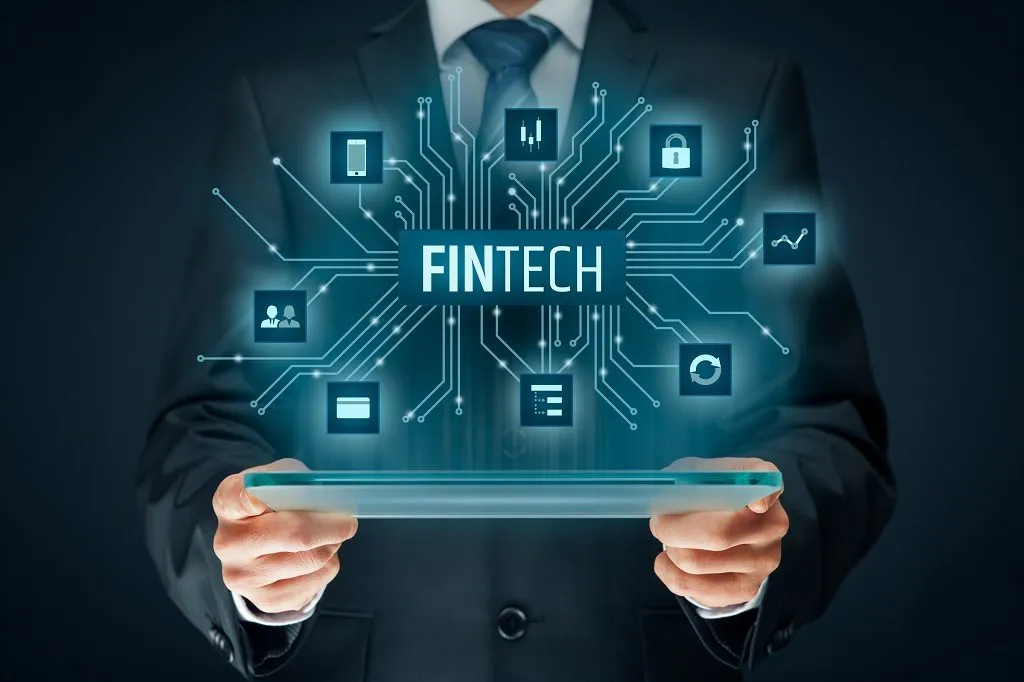Neither is the bank of your father here. Over the past ten years, modern financial institutions have changed so much that they provide a very different experience than the traditional brick-and-mortar banks did.
Financial institutions were driven to increase efficiency and create creative protections to control risk in order to stay up with the speed of operations and the security concerns in the modern surroundings. Fintech makes it possible, and the epidemic has greatly hastened user adoption of it.
The Evolution Of Fintech
KPMG said, "Fintech is the biggest disruptor of our time for financial institutions".
With an expected global market for the AI component fintech 7.91 billion USD in 2020 on target to reach $26.67 billion by 2026. That results from the projected compounded annual growth rate of 23.17% for the following five years.
“If you look at digital lenders that have manufactured fintech products for at least a decade, they’re doing quite a bit with AI. The idea of underwriting someone’s credit sits extremely nicely with an AI approach.” That's the finding made in Cardrates by Lex Sokolin, Global Director of Fintech Strategy and Partner at Autonomous Research.
Meeting Customer Expectations

KPMG pointed out that over the past decade, client expectations for financial institutions changed. They now demand the same degree of convenience and accessibility they have grown to enjoy on the retail front:
”In an era where retail products can be ordered and delivered in the same day, it’s no surprise that people want their financial transactions to also occur in real-time — and for decisions related to their mortgages, insurance coverage or other financial needs to be made in moments rather than days or even weeks.”
Accordingly, we see a surge in online and mobile banking, marketplace financing, new possibilities for digital payments, and automated solutions to accelerate processes. One of the uses of AI and ML is bringing automation to underwriting to speed the creditworthiness of applicants for loans and arrive at approval judgments faster.
VCAs (Virtual Customer Assistants)
Scaling up responsiveness to consumers with AI has led to giving support via a virtual assistant. Bank of America debuted its version dubbed Erica in 2018. It has increased from 6.3 million users in 2019 to 19.5 million in 2021. Interactions on the app nearly doubled in just a year, going from 27.8 million to 105.6 million.
Erica would be only one among many, according to the trend outlined by Gartner. It estimates that “70% of customer interactions will involve emerging technologies such as machine learning (ML) applications, chatbots and mobile messaging” by 2022. That indicates a huge increase from the meager 15% that was handled by similar tech in 2018.
Reality may reflect even higher percentages as digital solutions were more readily adopted by the public owing to the pandemic. Digital wallets and mobile payment choices were also more widely embraced in 2020 due to the epidemic, breaking the habits of a lifetime for some people within just a few months.
This is good news for banks that have been striving for years to convince clients to use automated services to minimize expenses. They nevertheless had to maintain the usual bank services open to satisfy consumers who were used to doing things “the old-fashioned way.” However, when many banks closed their physical locations or significantly reduced their hours during the lockdown, consumers had to adjust.
Robots and Automation

Banks are also already making use of robotic process automation (RPA). Among them is BNY Mellon, which began using bots as a way of capitalizing on AI capabilities to decrease costs and increase operational efficiency.
The cost savings are significant. In 2017 Reuters reported that the bank predicted an annual savings of $300,000 as a result of the move from manual operations done by people to the automation facilitated by bots.
That level of savings is only the tip of the iceberg for the industry. An Autonomous NEXT analysis indicated that AI may potentially lower operating expenses in the finance industry by 22%. By 2030, it forecasts the savings might top $1 trillion. Part of the reason for that expansion is the increase in the usefulness of robotics in the financial sector.
Dolgorukov notes that “Robo-advisors have seen advancements from online questionnaires to dedicated fund and portfolio management to algorithm-based rebalancing and proposals.”
He projected that this year, we’ll be witnessing “a refinement of systems and more fully-automated, self-learning algorithms to aid investors.”
These AI algorithms are able to take into account a number of personal aspects, including clients’ financial goals, budget and risk tolerance. As they develop more intelligent, these “advisors” are also able to foresee market patterns and even determine when and how to rebalance portfolios.
ML offers a solution to security that removes a lot of laborious tasks to do manual inspections using algorithms that will discover patterns of behavior to indicate abnormalities.The combination of predictive analytics and real-time data integration makes it possible to detect financial fraud threats as they happen. You may also read this: Fintech's Disruption Of Wealth Management
The Role of Blockchain
Blockchain is one of the methods being utilized by fintech to boost security. Its distributed ledger makes it possible to store and transfer assets or equity with the benefit of cryptography for security and transparency for the transactions. Blockchain is what makes a ledger truly immutable because its data cannot be overwritten, altered, or erased. It also keeps everything traceable and accessible. It also is the technology that underlies cryptocurrency like bitcoin and ethereum, tokenization, and digital assets.
These forms of digital wealth are projected to rise substantially over the next few years. According to IBM , “Tokenization alone is expected to be worth USD 24 trillion by 2027, a figure that represents 10 percent of global GDP.” It says that prominent names in the banking sector, including, J.P Morgan, Citigroup, Wells Fargo, and PNC, are now “adopting blockchain to enable their infrastructure to support a variety of digital assets”.
In addition to the benefit of security, a blockchain makes it possible to set up smart contracts. Such contracts not only establish but “also enforce the agreed-upon obligations automatically” thanks to the programming encoded in the blockchain.
Conclusion
Just as our models for purchasing have moved from traveling into a store to view what they have to looking online—likely on our phones—to buy what we want, the paradigm shifted for banking. Today’s generation thinks of banking as something that you do online and expects to be able to utilize their phones for all information and transactions. That’s why today’s financial institutions have no choice but to adopt fintech and adapt to digital demands for payments, services, and security.


